
Posts Tagged: valley carpenter bees
Sold on the Salvia
Ever watched Valley carpenter bees (Xylocopa varipuncta) foraging on salvia? Native pollinator specialist Robbin Thorp, distinguished professor of entomology at the University of California, Davis, recently noticed a flurry of carpenter bees in the grape-scented sage, Salvia melissodora, in the...
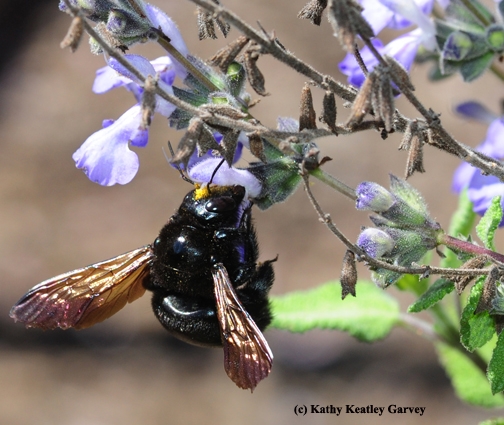
A female Valley carpenter bee, Xylocopa varipuncta, forages on grape-scented sage, Salvia melissodora. Note the "pollen cap." (Photo by Kathy Keatley Garvey)

Check out the "pollen cap" on this female Valley carpenter bee, Xylocopa varipuncta, foraging on grape-scented sage, Salvia melissodora. (Photo by Kathy Keatley Garvey)
Bees and Trees
We have a section of an old apple tree at the Haven that is being used by Valley carpenter bees, Xylocopa varipuncta, as a nest. I've included a picture here; the number and size of the galleries the bees have excavated is quite impressive. While entomologists generally don't regard carpenter bees...
The 'Gold' That an Apple Tree Yielded
Thar's gold in them thar apple trees. Gold? When a rotten apple tree was cut down last week on private property in Davis, scores of eyes peered from the drilled holes. Soon, adult male Valley carpenter bees (Xylocopa varipuncta)--those green-eyed golden bees known as "teddy bears"--emerged with...

A male Valley carpenter bee (right) peers from a hole. A female (all females are solid black) occupies the hole next to him.
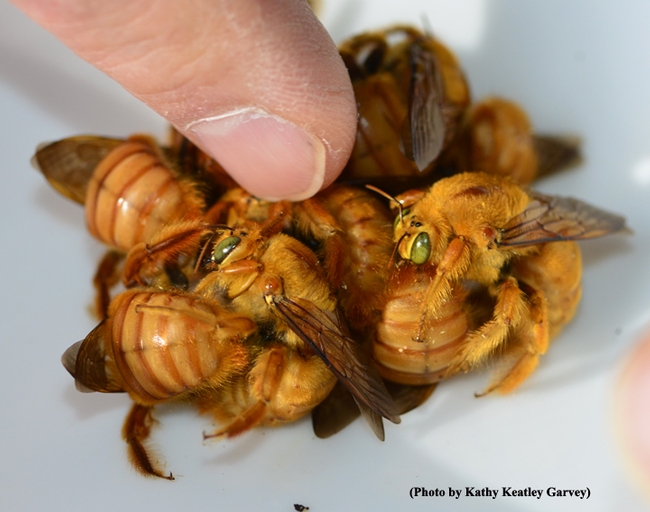
A cluster of male Valley carpenter bees.

Extension apiculturist (emeritus) Eric Mussen holds a handful of male Valley carpenter bees.
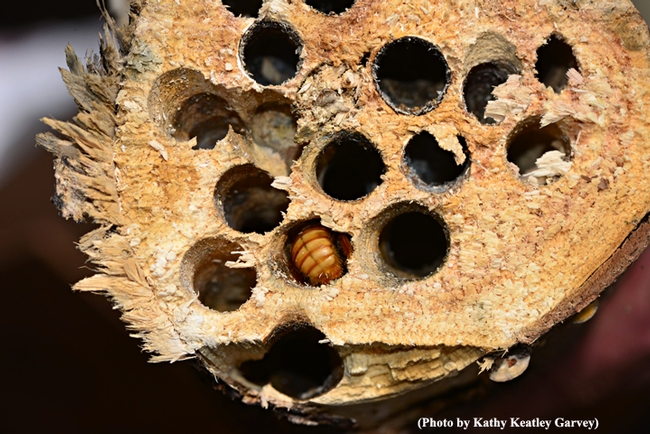
This male Valley carpenter bee backed into its drilled hole to keep warm.
Salvia, July Bee Plant of the Month
As we move into the heat of the summer, few plants show their value as bee plants for hot, dry gardens better than the salvias. Known by both their common name, sage, and their genus name, salvia, we have a tremendous number of these plants in the Haven for good reason. No bee garden should be...
Pollen Power
Female Valley carpenter bees are solid black--except when they're foraging around passion flowers. Then they're black and yellow--the yellow being the color of the pollen transferred to their thorax. Beautiful? Absolutely. Mary Patterson, one of the founding Häagen-Dazs Honey Bee Haven...
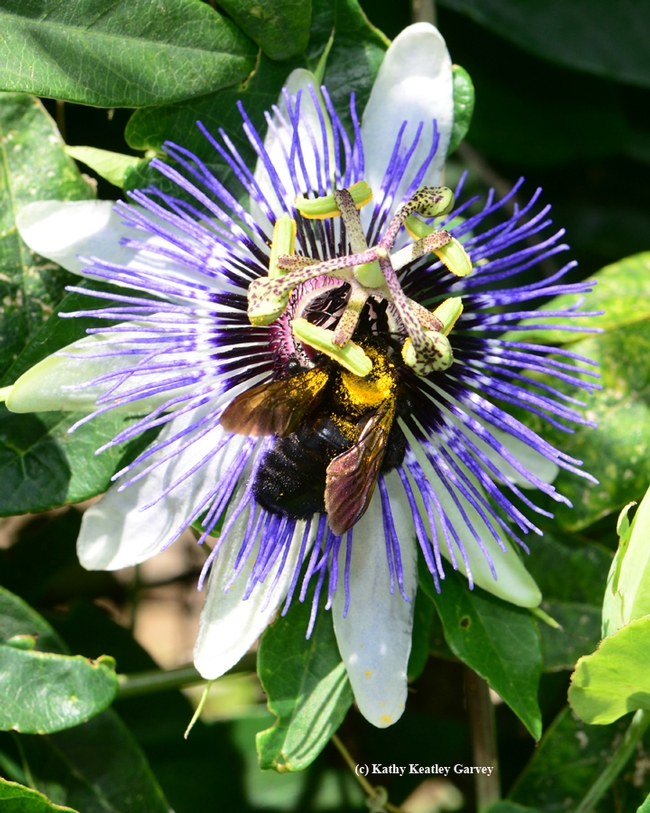
A Valley carpenter bee receives a brush of pollen. (Photo by Kathy Keatley Garvey)
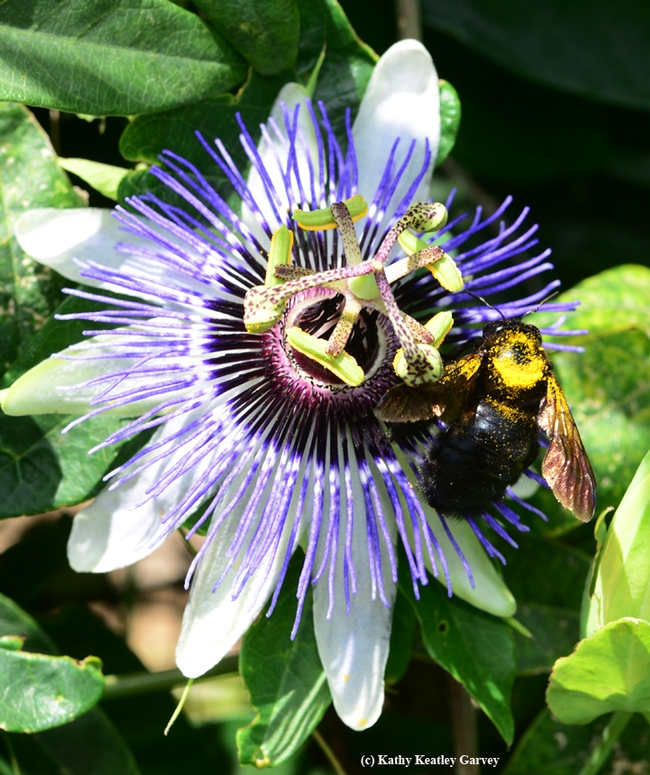
Check out the yellow pollen on this Valley carpenter bee's thorax. (Photo by Kathy Keatley Garvey)
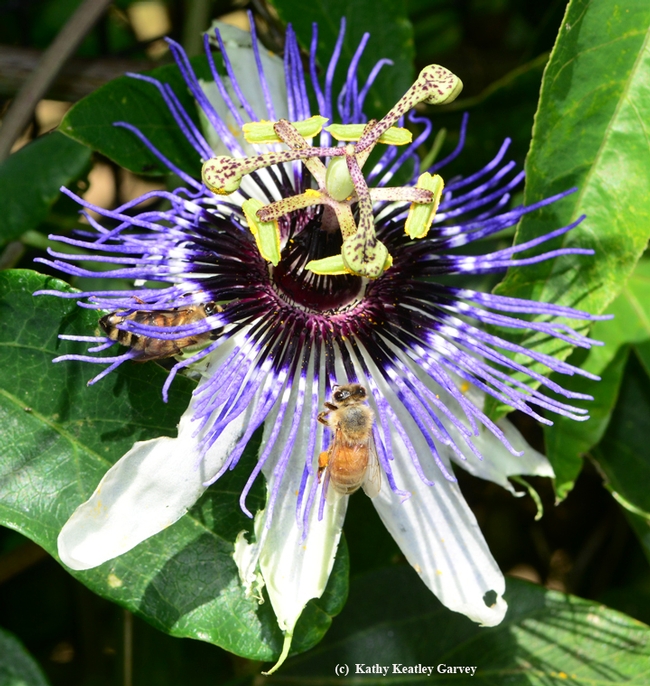
Honey bees frequent the passion flowers, too. (Photo by Kathy Keatley Garvey)
